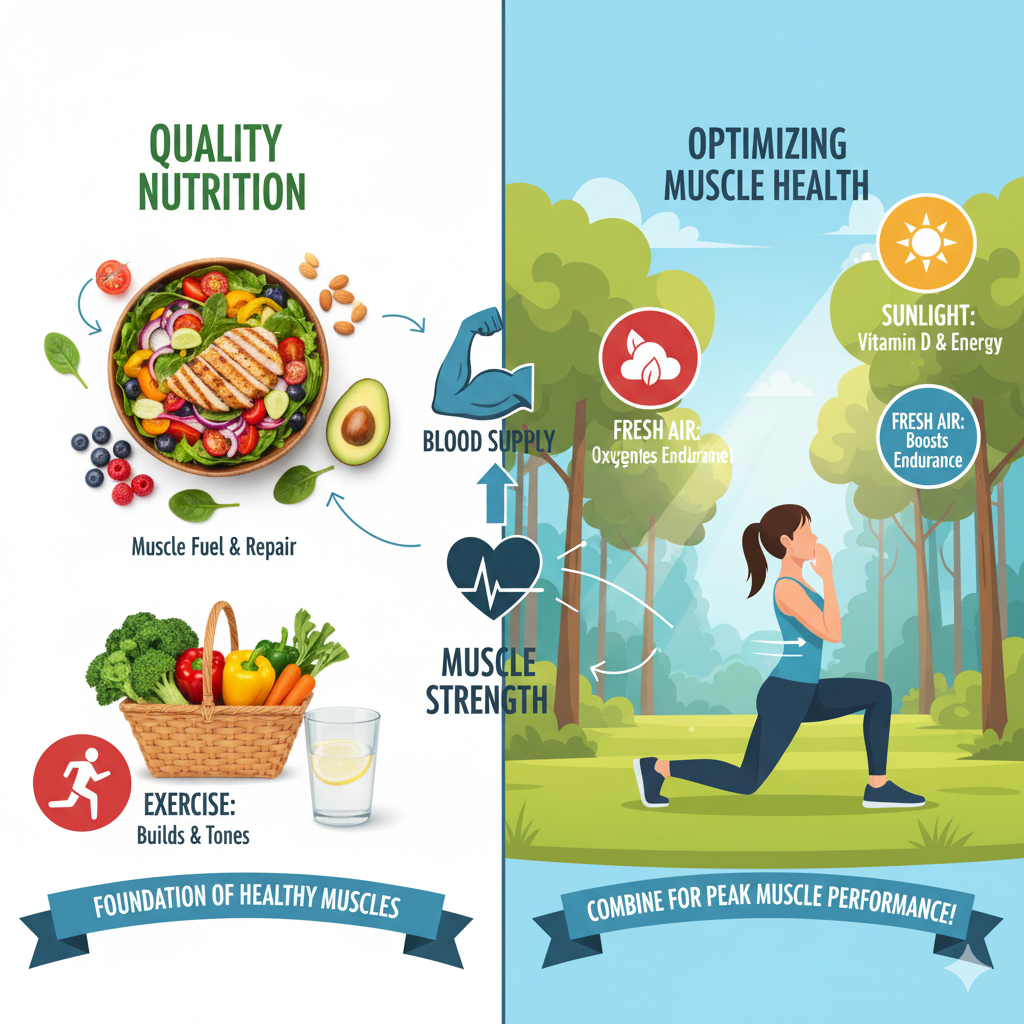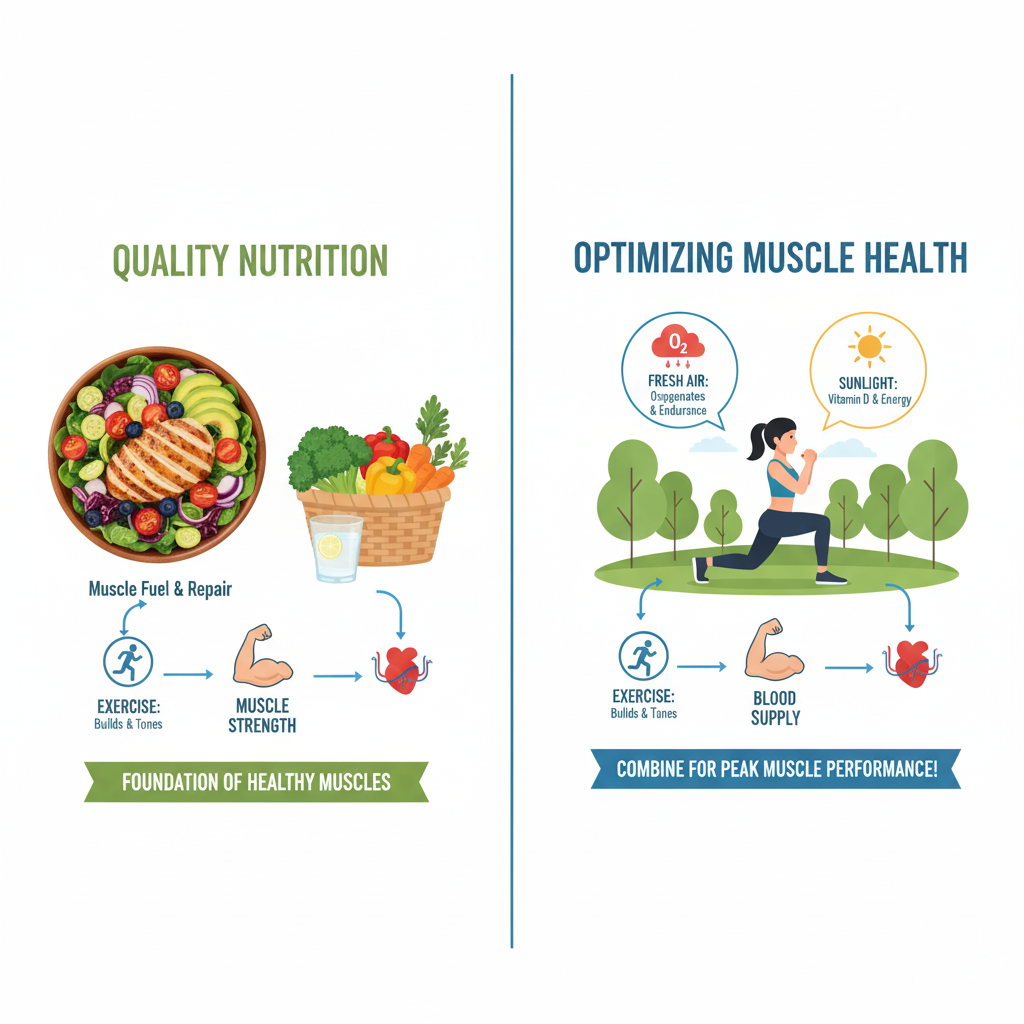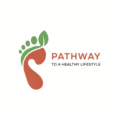Laws of Health for Muscles: Blood, Nutrition & Exercise
Ever wondered why some people stay strong and agile well into old age while others struggle with weakness and fatigue? The answer lies in understanding the fundamental principles that govern our muscular system. Modern lifestyles—sedentary work, poor nutrition, and limited sunlight exposure—have created an epidemic of muscle weakness that affects people of all ages. But there’s good news: muscle health and nutrition follows timeless laws that anyone can apply.
This comprehensive guide explores the laws of health for muscles, revealing how your blood quality, exercise habits, breathing patterns, and even your posture directly impact muscle strength and longevity. You’ll discover how proper nutrition nourishes muscle tissue, why oxygen-rich blood is essential for muscle vitality, and how simple daily habits can transform weak muscles into powerful, resilient systems. By understanding these principles, you’ll unlock the secret to maintaining muscle health and nutrition throughout your entire life.
Blood and Nutrition — The Foundation of Muscle Health
Your muscles are living tissues that depend entirely on one vital resource: blood. Every muscle fiber in your body draws its nourishment from the bloodstream, making muscle health and nutrition inseparable concepts. Think of your blood as a delivery system—it carries oxygen from your lungs and nutrients from your digestive system directly to muscle cells.
The quality of your blood determines the quality of your muscles. When you consume wholesome, balanced foods in appropriate quantities, your digestive system converts them into nutrient-rich blood that strengthens muscle tissue. However, loading your stomach with processed foods or excessive amounts creates unhealthy blood that weakens muscles over time. Similarly, when your lungs receive impure air, the capillaries throughout your body lose their life-giving oxygen, which is essential for purifying the body and energizing muscles.
This connection between blood supply and muscle strength explains why the first law of health for muscles mirrors that for bones: ensure your stomach receives food of proper quality and quantity, and that your lungs breathe pure air. The benefits of fresh air for muscle performance cannot be overstated—oxygen is literally the spark that ignites muscle vitality.

Every muscle movement causes some muscle particles to decay. These particles must be changed by oxygen carried in arterial blood, then expelled through the lungs and skin. Simultaneously, fresh nutrients from digested food replace these removed particles. This constant cycle of breakdown and renewal defines living muscle tissue.
Actionable Takeaway: Prioritize whole foods, adequate hydration, and time outdoors breathing clean air to optimize your blood quality and muscle nourishment.
Exercise — The Natural Stimulus for Growth
Movement is the language your muscles understand best. Whenever you exercise a muscle, arterial blood flows more abundantly into it, delivering increased supplies of oxygen and nutrients. This is why the laws of health for muscles emphasize that the more muscles are properly exercised, the more strength and nourishment they receive from the blood—until they reach their full, perfect size.
The second law of health for muscles is straightforward: take care that all muscles of your body reach their full size and strength through proper exercise for each muscle group. You can discover the full benefits of exercise on muscle tone and endurance by understanding how different movements target different muscle systems.
However, as the guide on pathophysiology of exercise-induced muscle damage outlines, there’s a critical balance to maintain. Exercise can be prolonged to the point where muscle particle decay exceeds the supply of nutrition furnished by the blood. When this happens, muscles actually grow smaller and weaker from over-action. Some people injure themselves as much through excessive exercise as others do through lack of it.
Signs of Healthy vs. Overworked Muscles
Healthy muscles display:
- Firmness and tone without constant soreness
- Ability to recover within 24-48 hours after exercise
- Gradual strength increases over time
- Good range of motion and flexibility
Overworked muscles show:
- Persistent soreness lasting beyond two days
- Decreased performance despite increased training
- Chronic fatigue and exhaustion
- Increased injury frequency
The third law addresses this balance: take care that none of your muscles are weakened by excess exercise. For those transitioning from inactive lifestyles, change must never be sudden. Begin with small increases in exercise, making very moderate daily additions. Rushing this process injures rather than benefits muscles. The connection between blood supply and muscle strength requires gradual adaptation—your circulatory system needs time to develop new pathways to newly active muscles.
The fifth law reinforces this principle: never increase your ordinary amount of exercise until cool and pure air is abundantly provided for the lungs. Increased exercise means increased blood flow, and if that blood hasn’t been properly oxygenated, muscle capillary action becomes imperfect.
The Role of Air, Sunlight, and Environment
Environmental factors play a surprisingly powerful role in muscle function. Light is exceptionally favorable to the perfect development of the human body. Consider how vegetables growing in darkness become pale and weak—the same principle applies to human muscles. Children raised in dark rooms and urban alleys develop weaker musculature than those who grow up with abundant sunlight exposure.
You can learn how sunlight supports muscle and bone health by understanding how natural light stimulates vitamin D production, which directly influences muscle protein synthesis and calcium regulation. This connection makes the sixth law essential: let all vigorous exercise be taken by daylight, not at night.

Pure air and sunlight work together to nourish both blood and muscles. The laws of health for muscles include daily exposure to daylight and fresh air because these elements enhance oxygen absorption and blood quality—the very foundations of muscle vitality.
Posture and Muscle Balance
Nothing is more important to certain muscles than proper posture in sitting and standing. The natural position of your spine is held upright by cartilage discs, creating no strain on trunk muscles. However, when you sit or stand with poor posture, certain muscles must constantly work to sustain that unnatural position.
Over time, this continuous strain reduces muscle strength. The discs between vertebrae gradually harden to assist these overworked muscles, but the result is a spine fixed in a deformed position—a condition requiring long, laborious correction. This demonstrates the seventh law: take care that trunk muscles aren’t weakened by long-continued unnatural spine positions.
Interestingly, how clothing choices affect muscle circulation also impacts posture-related muscle health. Tight garments around the trunk compress muscles, preventing proper blood flow and reducing muscle size and strength. This explains why corsets and tight bracers actually worsen crookedness and round shoulders rather than correcting them—anything compressing muscles weakens them.
The eighth law addresses this directly: take care that muscles, especially trunk muscles, aren’t weakened by any kind of tight dress. Tight articles around the neck, legs, or arms similarly interfere with full muscle health and strength.
Massage and Muscle Recovery
When muscles are injured or so weak that little exercise is possible, manual therapy becomes crucial. Rubbing, gentle percussion, and pressure techniques increase blood flow into muscles, promoting healing and regeneration. This connection between blood supply and muscle strength explains why massage has been valued across cultures for thousands of years.
Nothing comforts and strengthens weak muscles like having them rubbed and exercised through intermittent pressure, especially when done in pure air after bathing. In hot countries where inhabitants historically avoided vigorous self-exercise, having muscles kneaded, pinched, and manipulated by bath attendants was considered a great luxury—and a practical necessity for maintaining muscle health and nutrition.
Modern research confirms this ancient wisdom: massage promotes circulation, reduces muscle stiffness, accelerates waste removal, and supports tissue regeneration. These benefits are essential components of comprehensive muscle health and nutrition strategies. You can explore effective massage techniques for muscle health and recovery to implement these principles yourself.
The ninth law crystallizes this approach: when a person is too weak to use muscles actively, let another person increase blood flow through manual manipulations. This technique bridges the gap between complete inactivity and active exercise, supporting gradual muscle restoration.
Muscle Health from Childhood to Adulthood
Nothing is more indispensable to beauty of form than proper exercise of all muscles throughout life. The laws of health for muscles emphasize that childhood is the critical period for establishing lifelong patterns. Children engaged in varied outdoor play naturally exercise their entire bodies, developing the balanced, rounded form that defines healthy youth.
However, grown persons typically confine exercise to small portions of the body—walking uses legs but neglects arms; desk work engages hands but ignores core muscles. This selective use explains why the perfect form of childhood rarely persists into mature life, though it could with proper attention.
Early-life activity literally shapes muscle form and strength for decades to come. Children who climb, run, swim, throw, and play develop neural pathways and muscle fibers that serve them throughout adulthood. Conversely, children confined to sedentary activities develop limited muscle capacity that becomes increasingly difficult to expand with age.
The tenth and final law addresses this reality: direct special care to the universal development of all muscles during childhood and youth, and ensure that throughout life, muscles of the whole body receive due exercise. Regular comprehensive exercise programs that engage upper body, lower body, and core muscles preserve the balanced development that defines healthy aging.
For adults seeking to restore lost muscle balance, the journey requires patience and consistency. Start with gentle, full-body movements that gradually awaken dormant muscle groups. Combine strength work with flexibility training, ensuring that blood supply and muscle strength develop together. Remember that muscle tissue retains remarkable plasticity—given proper stimulus, nutrition, and recovery, muscles can rebuild strength even after years of neglect.
Caring for your muscles is caring for your longevity. Strong, balanced muscles support skeletal alignment, protect joints from injury, maintain metabolic health, and preserve independence in later years. The principles governing muscle health and nutrition aren’t complex—they’re timeless laws rooted in how your body actually functions.
Conclusion
The laws of health for muscles form an integrated system where each principle supports the others. Balanced nutrition creates healthy blood; healthy blood nourished by oxygen-rich air fuels muscle tissue; proper exercise stimulates blood flow and muscle development; sunlight and fresh air optimize blood quality; correct posture prevents muscle strain; appropriate clothing allows free circulation; massage aids recovery; and comprehensive exercise throughout life maintains muscle balance.
These aren’t complicated medical theories—they’re practical principles anyone can apply. Whether you’re young or old, athletic or sedentary, these laws govern how your muscles function. The quality of your muscle health and nutrition directly determines your strength, energy, and physical capability throughout life.
Start nurturing your muscles today by following these timeless principles for stronger, healthier living. Eat wholesome foods in moderate amounts, breathe deeply of pure air, exercise regularly but avoid excess, spend time in sunlight, maintain good posture, wear comfortable clothing, and ensure all muscle groups receive attention. Your future self will thank you for the strength and vitality these simple habits create.
